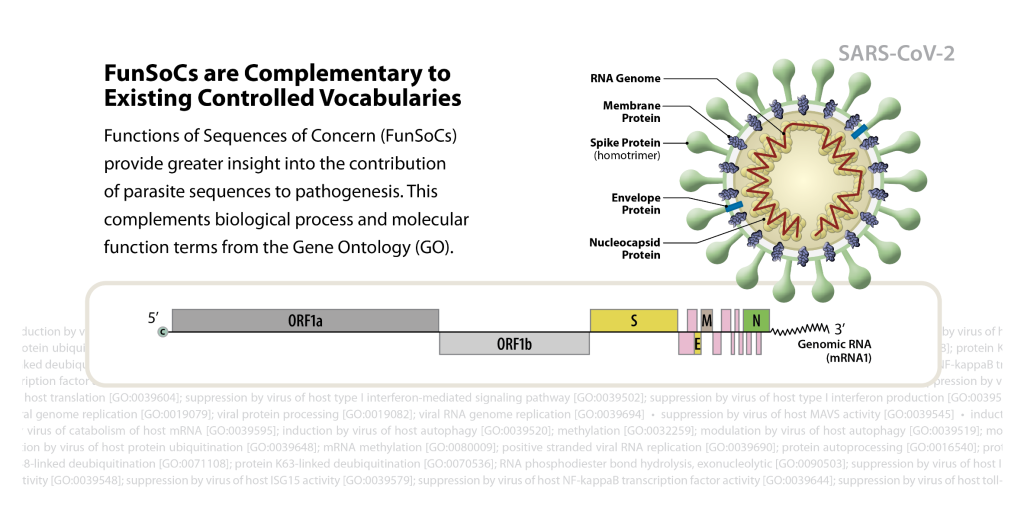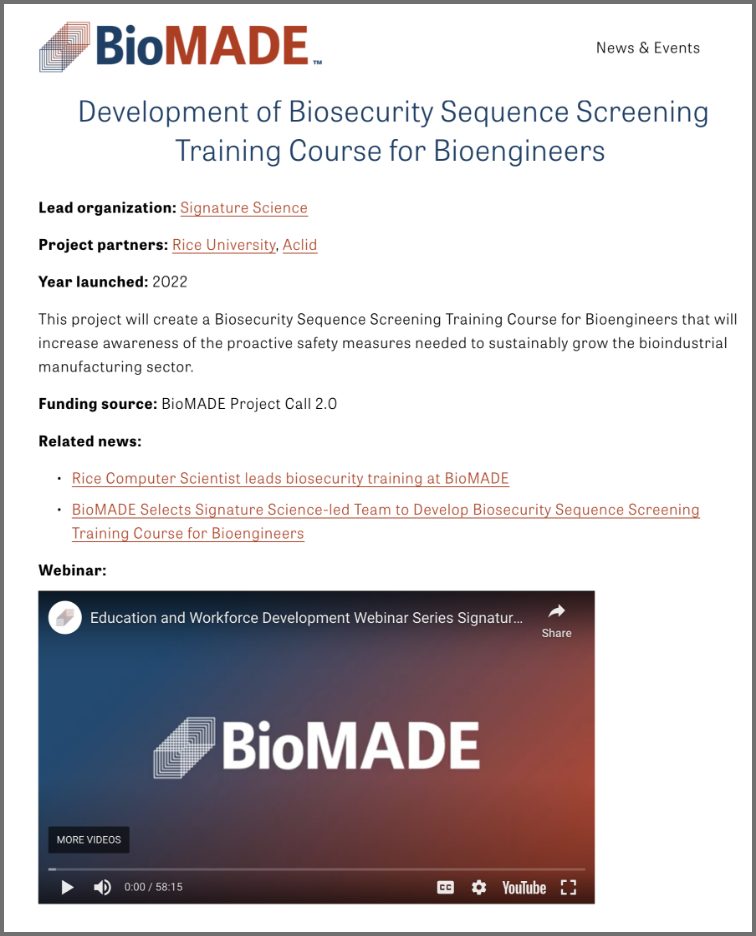
Senior Scientist
Contact Gene
Biotechnology, bioengineering, and biomanufacturing benefit society in many ways, including in agriculture, sustainable food production, healthcare, and pharmaceuticals. Information technologies allow the economical generation of synthetic nucleic acid strands, facilitating the modification of microbes to produce novel compounds. There is some risk that this process could be misused by bad actors or that dangerous microbes might be accidentally generated. While the likelihood of occurrence is low, misuse may have serious consequences.
The U.S. Government issued guidance in October 2023 shifting its policy for screening sequences away from a list of microbes deemed particularly worrisome to the screening of synthetic nucleic acids for sequences of concern (SoCs) that contribute to pathogenicity or toxicity. Acknowledging the lack of a government-approved public dataset for sequences of concern, the October 2023 White House Executive Order called for several new developments including “best practices … for managing sequence-of-concern databases to support such screening.” Effective screening of sequences will require a seller of synthetic nucleic acid sequences to ascertain not only the presence or absence of a dangerous sequence, but also the function of that sequence within the original organism.
Relationship Between FunSoCs and the Gene Ontology (GO)


With goals to support the safety of engineered products, awareness of security vulnerabilities, and the sustainability of the industry, Signature Science supports the advancement of best practice screening techniques through design of open-source sequence screening software tools, creation of controlled vocabularies that describe the functions of sequences of concern (FunSoCs), the annotation of SoCs with function from the scientific literature, and on-line courses for bioengineers which offers them a stepwise approach to functional prediction-based screening for a range of relevant sequence types. These initiatives, together, promote collaboration and transparency in advancing biosecurity best practices.
Signature Science Supports Biosecurity Best Practices
Bioinformatic Software and Databases
Developing and maintaining open-source bioinformatics software and databases that contribute to biosecurity pipelines (e.g., SeqScreen). MORE.
Annotating Functional Sequences of Concern
Standardized ontology refinement and annotations of sequences of concern (e.g., FunSoCs). MORE.
BioMADE Training Course Available on YouTube
Biosecurity screening education and training (e.g., BioMADE Training Course) to prepare the workforce to recognize the necessity of biosecurity. MORE.
FAQs
What is a Sequence of Concern (SoC)?
A sequence of concern is one that enables a microbial pathogen of humans to cause disease or that enables a venom- or poison-producing organism to cause harm.
How are harmful Sequences of Concern (SoCs) identified?
Subject matter experts review the scientific literature to identify sequences that appear important to pathogenesis for parasites of humans, selecting for their effect on the host, including which host processes are manipulated, and how directly the sequence exerts its effects.
What are Functions of Sequences of Concern (FunSoCs)?
FunSoCs are ways to describe the worrisome features of proteins that contribute to pathogenicity or toxicity. They are derived from descriptions of the sequence in the professional literature. All functional assertions have a citation so that the concerning function can be confirmed and validated by outside experts.

How do FunSoCs support biosecurity screening best practices?
‘Risky’ sequences found in existing databases have not been curated according to an established rubric that allows for the extraction of function. Existing terms like “virulence factors” can refer to molecular characteristics that are not necessarily pathogenic. The use of the compact, controlled FunSoCs vocabulary allows for an increased ease of description by bioengineers and computing technologies conducting biothreat screening, and may benefit researchers in epidemiology, microbial genomics and forensics, DNA synthesis screening, and human disease modeling. It can be paired with other vocabularies, including terms from the gene ontology (GO) to allow a more precise understanding of function.
Publications
Video

References
Want more information about sequence screening for biosecurity?



